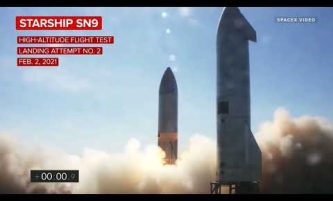
Tesla's Autopilot 2 0 The Evolution of Self Driving Technology
Tesla, Inc., the electric vehicle (EV) company founded by Elon Musk. Please note that the information provided here may not reflect the most recent developments or products introduced by Tesla.
Tesla, Inc.:
Tesla, Inc. is an American electric vehicle and clean energy company founded by Elon Musk, JB Straubel, and others in 2003. Initially, the company aimed to accelerate the world’s transition to sustainable energy by producing electric cars and clean energy products. Tesla has become a major player in the automotive industry and is known for its groundbreaking electric vehicles, energy products, and advancements in autonomous driving technology.
Key Milestones and Products:
Roadster (2008): Tesla’s journey began with the Tesla Roadster, an all-electric sports car based on the Lotus Elise chassis. It was the first highway-legal electric vehicle with a range of over 200 miles per charge. The Roadster demonstrated the potential for electric vehicles to be both high-performance and environmentally friendly.
Model S (2012): The Model S was Tesla’s first mass-produced electric car, known for its long range and cutting-edge technology. It popularized the idea of a practical and luxurious electric vehicle and received critical acclaim.
Model X (2015): The Model X was Tesla’s all-electric SUV, featuring distinctive falcon-wing doors and advanced safety features. It combined practicality with high performance.
Model 3 (2017): The Model 3 was designed to be a more affordable, compact electric car with the goal of bringing electric vehicles to a broader market. It quickly became one of the best-selling EVs in the world.
Model Y (2020): The Model Y is a compact SUV based on the Model 3 platform, offering similar features and technology in a more spacious package.
Solar Products: Tesla acquired SolarCity in 2016 and expanded its offerings to include solar panels and solar roofs. These products allow homeowners to generate clean energy and reduce their reliance on traditional power grids.
Energy Storage: Tesla’s Powerwall and Powerpack products are energy storage solutions that use advanced lithium-ion battery technology. They can store excess energy generated from solar panels or provide backup power during outages.
Autopilot and Full Self-Driving (FSD): Tesla has been at the forefront of autonomous driving technology. Their vehicles come equipped with Autopilot, a driver-assist feature, and Full Self-Driving (FSD) capabilities, which are continually being improved and expanded.
Gigafactories: Tesla has established large-scale manufacturing facilities called Gigafactories around the world to increase production capacity. These include Gigafactory 1 in Nevada, Gigafactory 3 in Shanghai, and Gigafactory 4 (now known as Giga Berlin) in Germany.
Sustainability and Environmental Impact:
One of Tesla’s core missions is to reduce the world’s reliance on fossil fuels and address climate change. They aim to achieve this through the mass production of electric vehicles and the development of sustainable energy solutions like solar panels and energy storage. Tesla’s environmental initiatives also include recycling and reducing waste in manufacturing processes.
Challenges and Controversies:
While Tesla has achieved remarkable success, it has also faced challenges, including production bottlenecks, quality control issues, and safety concerns. Elon Musk’s sometimes controversial statements and behavior have also generated attention and debate.
In conclusion, Tesla, Inc. has played a pivotal role in the evolution of electric vehicles and sustainable energy solutions. Under the leadership of Elon Musk, the company has continued to push the boundaries of technology, and its products have had a significant impact on the automotive and energy sectors. Please note that Tesla’s products and developments may have evolved since my last knowledge update in September 2021, so it’s advisable to check the latest information from Tesla’s official sources for the most current details.




